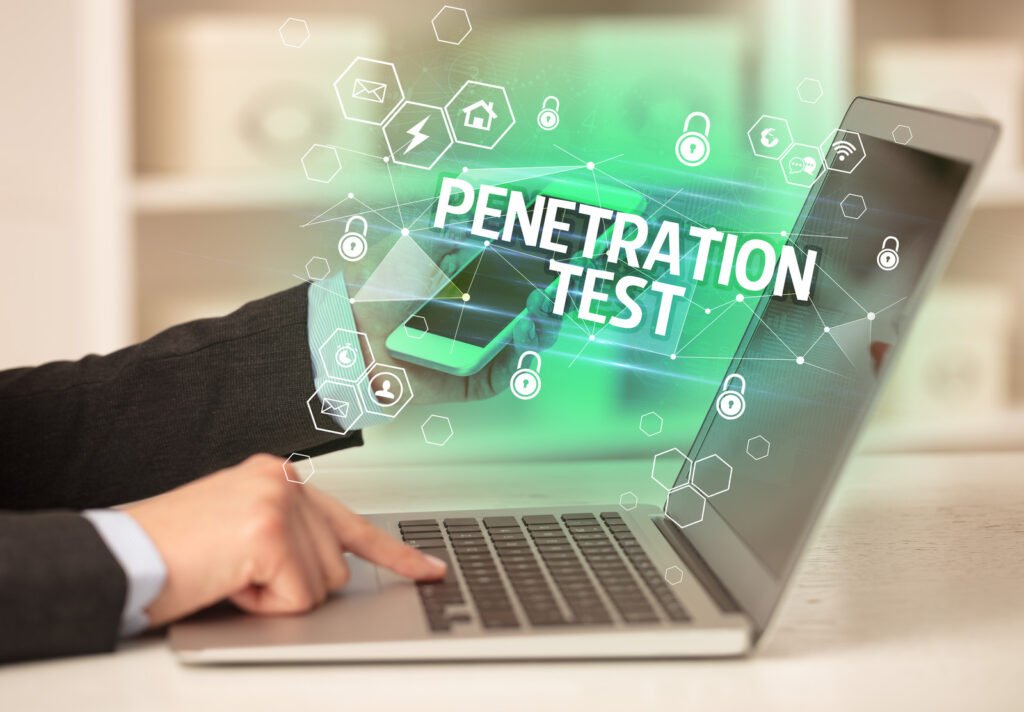In a world where cyber threats are constantly evolving, businesses can't afford to be complacent about their digital security. Penetration and Security testing are the unsung heroes of the cybersecurity realm.
This comprehensive guide will uncover the essentials of penetration testing, why it's crucial for businesses, and what you need to know to stay ahead of cybercriminals.
What is Penetration Testing?

Penetration testing, also known as pen testing or ethical hacking, is the process of simulating an attack on a computer system, network, or web application to identify security vulnerabilities and security weaknesses. It involves actively attempting to exploit security flaws in a controlled manner, with the goal of finding and reporting them before malicious hackers can do so.
Types of Penetration Testing
There are several types of penetration testing, each with its own focus and purpose. Some common ones include:
- Network Penetration Testing: This involves assessing the security of a network infrastructure by attempting to gain unauthorized access.
- Web Application Penetration Testing: This focuses on identifying vulnerabilities in web applications such as e-commerce sites and online forms.
- Wireless Network Penetration Testing: This involves testing the security of wireless networks and devices.
- Social Engineering Penetration Testing: This type of testing focuses on exploiting human vulnerabilities, such as tricking employees into giving out confidential information or accessing restricted areas.
- Physical Penetration Testing: This involves assessing the physical security of an organization. Can unauthorized individuals gain access to sensitive areas? This test reveals potential physical vulnerabilities.
Why is Penetration Testing Important?

- Identify Vulnerabilities Before Hackers Do
Hackers are constantly looking for new ways to exploit systems and steal sensitive data. Regular penetration testing helps identify and fix vulnerabilities before they can be exploited by malicious actors.
- Protect Your Business Reputation
Data breaches not only result in financial losses but also damage a company's reputation. Customers won't trust a business that has experienced a breach, especially if sensitive information was compromised. Regular penetration testing can help prevent this from happening.
- Comply with Regulations
Many industries have strict regulations regarding data security, such as the General Data Protection Regulation (GDPR) and the Health Insurance Portability and Accountability Act (HIPAA). Penetration testing helps ensure compliance with these regulations and avoid costly penalties.
How to Get Started with Penetration Testing

- Define Your Objectives: Determine what you want to achieve through penetration testing, whether it's identifying vulnerabilities or meeting regulatory requirements.
- Choose a Qualified Provider: Choose reputable penetration testers/penetration testing services with relevant certifications and experience in your industry.
- Scope the Testing: Clearly define the scope of the testing, including the systems and networks to be tested, the type of testing to be conducted, and any sensitive areas that need to be excluded.
- Conduct the Testing: The penetration testers will simulate an attack on your systems using a combination of automated tools and manual techniques. They will then provide you with a detailed report of their findings.
- Implement Remediation Plan: Work with your IT team or security team provider to address and fix any vulnerabilities identified during the penetration test.
- Schedule Regular Testing: Penetration tests should be an ongoing process, ideally conducted at least once a year or whenever there are significant changes in your systems or networks.
Steps Involved in Conducting Effective Tests

Conducting penetration tests and security audits involves several key steps:
Planning and Scoping
Before any pen testing begins, it's crucial to define the scope and objectives of the test. What systems will be tested? What are the goals? This stage sets the foundation for the entire process.
Information Gathering
In this step, testers gather information about the target systems. This can include IP addresses, network topology, and employee details. The more information gathered, the more effective the test will be.
Vulnerability Analysis
Testers use various tools to identify security weaknesses and vulnerabilities in the target systems. This can involve automated scanning tools as well as manual techniques.
Exploitation
This is where the pen testing gets hands-on. Penetration testers attempt to exploit the identified vulnerabilities to see how far they can gain access and penetrate the target system.
Post-Exploitation
After gaining access, pen testers assess what data they can access and how deep they can go. This step helps identify the potential impact of an exploit.
Penetration Test Report
The final step involves compiling a detailed report of the findings. This includes the security vulnerabilities identified, how they were exploited, and recommendations for remediation.
Real-World Examples of How Testing Prevents Cyber Attacks

Security and Penetration testing have proven time and again to be invaluable in preventing cyber attacks. Here are a few real-world examples:
Preventing Data Breaches
A major healthcare provider conducted regular penetration testing and discovered a vulnerability in their patient data management system. By addressing the issue, they prevented a potential data breach that could have exposed sensitive patient information.
Thwarting Ransomware Attacks
A financial institution identified vulnerabilities in their network through regular testing. By fortifying these weak points, they prevented a ransomware attack that could have crippled their operations.
Securing Online Transactions
An e-commerce platform conducted web application penetration testing and found a vulnerability that could have allowed hackers to intercept customer payment information. Fixing the issue ensured the security of their online transactions.
The Role of Testing in Regulatory Compliance

Compliance with industry regulations is a critical aspect of business operations. Regular penetration testing play a key role in meeting these requirements:
GDPR Compliance
The General Data Protection Regulation (GDPR) mandates that organizations protect personal data. Regular pen testing helps ensure that data protection measures are effective and compliant with GDPR standards.
PCI DSS Compliance
The Payment Card Industry Data Security Standard (PCI DSS) requires businesses that handle credit card information to maintain robust security measures. Penetration testing is a vital component of PCI DSS compliance.
HIPAA Compliance
The Health Insurance Portability and Accountability Act (HIPAA) sets standards for protecting sensitive patient data. Regular pen testing helps healthcare organizations maintain HIPAA compliance.
Tools and Technologies Used in Penetration Tests

Various tools and technologies are employed in security and penetration testing to identify and exploit vulnerabilities:
Automated Scanning Tools
Tools like Nessus and OpenVAS automate the process of scanning for vulnerabilities. They provide a comprehensive overview of potential weak points.
Exploitation Frameworks
Frameworks like Metasploit allow testers to simulate attacks and exploit vulnerabilities. These frameworks are essential for hands-on testing.
Network Analysers
Wireshark is a popular network analyser that helps testers capture and analyze network traffic. It’s invaluable for identifying network vulnerabilities.
Web Application Scanners
Tools like Burp Suite and OWASP ZAP scan web applications for common vulnerabilities. They provide insights into potential security flaws in web applications.
Best Practices for Choosing a Testing Partner

Selecting the right partner for penetration and security testing is crucial. Here are some best practices to consider:
Expertise and Experience
Look for a partner with a proven track record and expertise in penetration and security testing. Experience matters when it comes to identifying and mitigating vulnerabilities.
Comprehensive Services
Ensure the partner offers a range of testing services, from network and web application testing to social engineering and physical penetration testing.
Clear Reporting
A good testing partner provides clear and detailed reports of their findings. This includes actionable recommendations for remediation.
Ongoing Support
Cybersecurity is an ongoing effort. Choose a partner that offers ongoing support and retesting to ensure that vulnerabilities are effectively addressed.
Future Trends in Penetration Testing and Security

The field of penetration testing and security is continually evolving. Here are some future trends to watch:
AI and Machine Learning
AI and machine learning are being integrated into testing tools to enhance the identification of vulnerabilities and automate certain aspects of the pen testing process.
Continuous Testing
Continuous testing involves integrating testing into the development pipeline. This ensures that vulnerabilities are identified and addressed throughout the software development lifecycle.
IoT Security Testing
With the proliferation of Internet of Things (IoT) devices, security testing for IoT is becoming increasingly important. This involves assessing the security of connected devices.
Conclusion
In a world where cyber threats are constantly evolving, penetration and security testing are indispensable tools for businesses. Regular testing not only identifies vulnerabilities but also strengthens defences and builds trust with customers. By staying ahead of potential threats, businesses can safeguard their sensitive data and ensure compliance with industry regulations.